This website uses cookies
This website uses cookies to enable it to function properly and to analyse how the website is used. Please click 'Close' to accept and continue using the website.


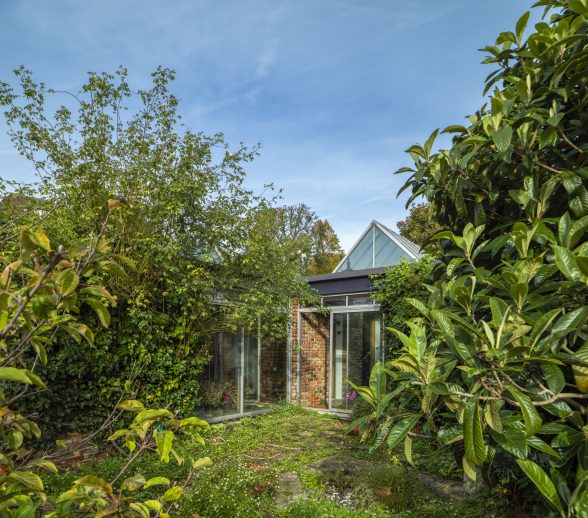
Image: Historic England
No. 34 Belsize Lane in Camden, London by Georgie Wolton (1934-2021) has been listed at Grade II, following support from C20 Society. A house she called the ‘last of the English follies’, it is the first building by Wolton to be recognised with listing,
Designed by Wolton as a home and studio for herself and her family in 1975-1976, it remains a private house and is one of a small number of buildings by the architect, who increasingly specialised in landscape design as her career progressed. Wolton had a pivotal, though short-lived role in the formation of the architectural practice, Team 4 in the early 1960s, alongside Norman Foster, Richard Rodgers, Su Brumwell and Wendy Cheesman. She went on to work in independent practice, one of few women architects in the post-war period to do so.
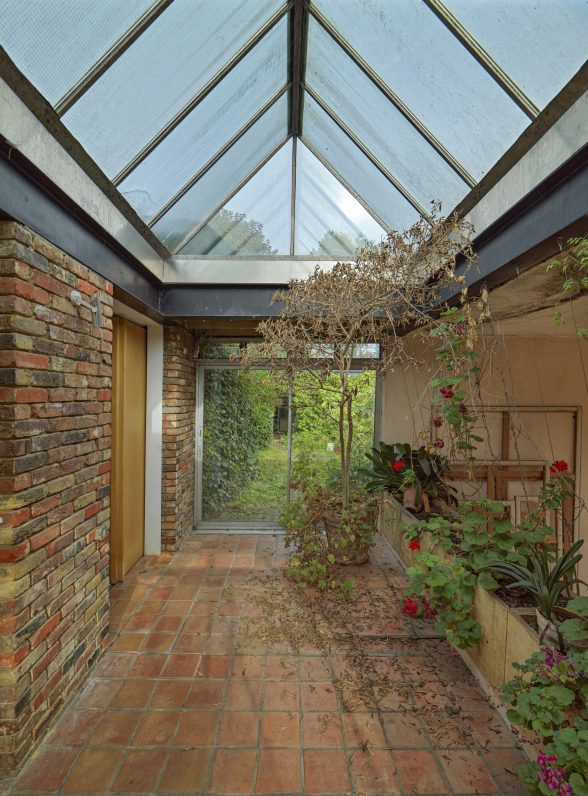
Image: Historic England
Post-war plots
Bomb-damaged sites and the subdivision of large houses and their gardens offered challenging but affordable plots for young architects after the Second World War. Wolton chose to create a single-storey house almost completely hidden from view, shielded behind the old brick boundary wall which extends along Belsize Lane. Behind the wall, the brick and glass building sits nestled amongst greenery with three distinct courtyard gardens created around it so that every room feels connected to the outdoors.
Working houses
The house is structurally simple, but it is the architect’s creative handling of natural light and spatial proportion which elevates the interior to something special – critic and author Rowan Moore describes it as “a three-dimensional sundial”. Wolton was interested in creating a strong relationship between inside and outside and needed plenty of wall space to display her personal collection of Turkish kelim rugs. She introduced rooflights, bespoke sliding timber shutters and conservatory-like antechambers into her design – these areas illustrated the concept of what she called ‘pause’ spaces separating the living and working parts of the house.
Wolton had a long-standing interest in buildings designed to function as both domestic and work spaces. Two of her three key buildings were designed as working houses: Cliff Road Studios and 34 Belsize Lane, both in Camden. The building is on Camden’s local list of heritage assets and is situated within a conservation area. Alterations to the building will be handled through the listing building consent process, along with planning permission, by the local authority so that the significance of the building is maintained.
The owner will be sharing the restoration journey on Instagram via @georgiewoltonhouse.
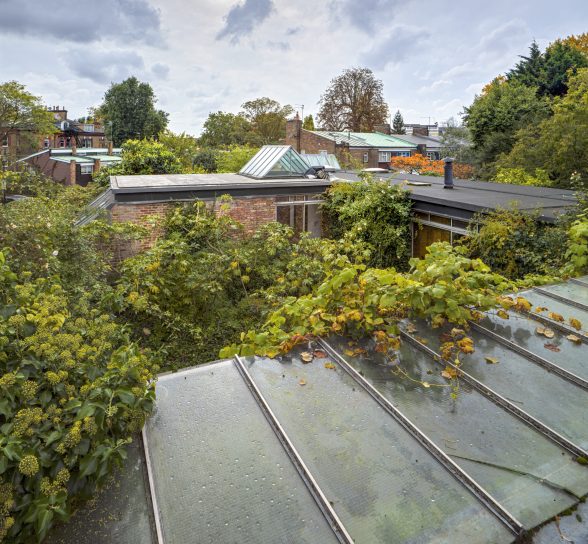
Image: Historic England
Biography
Georgina Cheesman attended Epsom School of Art before studying architecture at the Architectural Association, London between 1955 and 1960. She married publisher David Wolton in 1962 and had their daughter, Suke, the same year.
In 1963, after a brief stint working for Middlesex County Council, she formed the architectural firm Team 4 with Richard Rogers, whom she had met whilst studying at Epsom, Su Rogers, Norman Foster and her younger sister Wendy Cheesman (later Foster). It was Wolton who allowed the practice to function, being the only member of the group who was at that time a fully qualified architect. She moved on very swiftly however, partnering for a short time with Adrian Gale, formerly of Mies van der Rohe’s studio, before spending the rest of her career as a sole practitioner.
Her Fieldhouse in East Horsley, Surrey (now demolished) was built in 1968 with a corten (weathered) steel frame. It is amongst the first domestic uses of corten steel in the UK. It was one of several of houses designed by British architects in the 1960s and ‘70s which were heavily influenced by Mies van der Rohe’s Farnsworth House in Illinois. Wolton’s Cliff Road Studios, Phase I (1969) and II (1971-2), are her best-known work. The scheme drew admiration in architectural circles for its reference to early European modernism and Parisian studio houses of the 1920s.
As a landscape designer Wolton worked for private, public and commercial clients. She completed many schemes for her long-standing friend, Richard Rogers, as well as others at Dartington Hall, Devon and The River Café, Hammersmith.
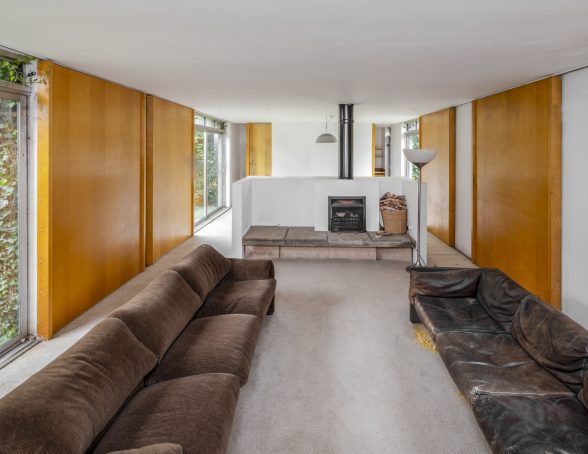
Image: Historic England
Catherine Croft, C20 Director said:
“In Georgie Wolton’s generation, architecture was largely a man’s world. Building her own home exactly as she wanted it, could be seen as a subversive and powerfully feminist act.
34 Belsize Lane is a really subtle and understated project, a very personal work which has survived remarkably intact. Behind an unassuming boundary lies a small masterpiece – a house she called the ‘last of the English follies’, one totally in touch with the exciting architectural zeitgeist of its day, but also unique and uncompromising.”
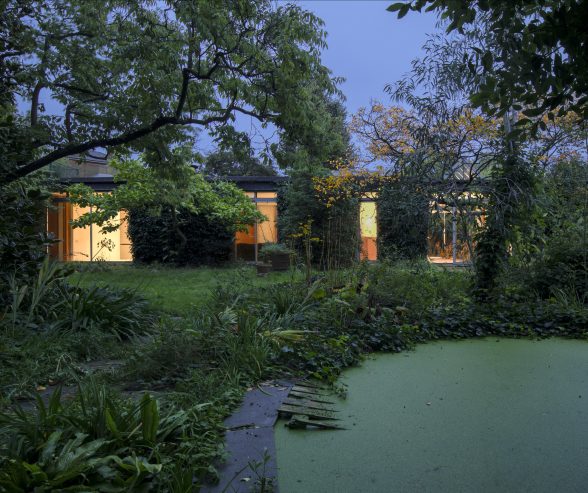
Image: Historic England

Become a C20 member today and help save our modern design heritage.